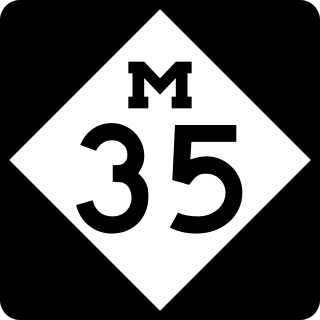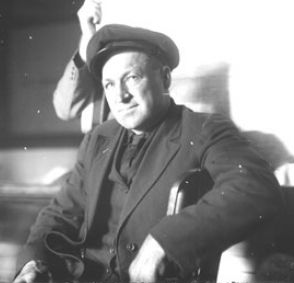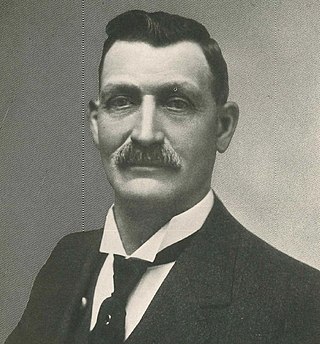
Branford is a shoreline town located on Long Island Sound in New Haven County, Connecticut, United States, about 6 miles (10 km) east of downtown New Haven. The town is part of the South Central Connecticut Planning Region. Branford borders East Haven to the west, Guilford to the east, and North Branford to the north. The population was 28,273 in the 2020 census.

Escanaba, commonly shortened to Esky, is a port city and the county seat of Delta County in the U.S. state of Michigan, located on Little Bay de Noc in the state's Upper Peninsula. The population was 12,450 at the 2020 census, making it the third-largest city in the Upper Peninsula after Marquette and Sault Ste. Marie.

William Dawes Jr. was an American soldier, and was one of several men who, in April 1775, alerted minutemen in Massachusetts of the approach of British regulars prior to the battles of Lexington and Concord at the outset of the American Revolution. For some years, Paul Revere had the most renown for his ride of warning of this event.

Sybil Ludington was an American woman who made an alleged ride during the American Revolutionary War, though modern accounts dispute this. On April 26, 1777, at age 16, Ludington, the daughter of a Colonel Henry Ludington, was claimed to have made an all-night horseback ride 40 miles (64 km) to rally American militiamen in neighboring towns after British forces raided and burnt Danbury, Connecticut.

Henry Ludington was an American soldier in the American Revolutionary War. He aided the effort by providing spies and was associated with John Jay in a ring of spies.

M-35 is a state trunkline highway in the Upper Peninsula (UP) of the US state of Michigan. It runs for 128 miles (206 km) in a general north–south direction and connects the cities of Menominee, Escanaba, and Negaunee. The southern section of M-35 in Menominee and Delta counties carries two additional designations; M-35 forms a segment of the Lake Michigan Circle Tour, and it is the UP Hidden Coast Recreational Heritage Trail, which is a part of what is now called the Pure Michigan Byways Program. Along the southern section, the highway is the closest trunkline to the Green Bay, a section of Lake Michigan. The northern section of the highway turns inland through sylvan areas of the UP, connecting rural portions of Delta and Marquette counties.

Harrison Ludington was an American businessman, Republican politician, and Wisconsin pioneer. He served as the 13th governor of Wisconsin and was the 20th and 22nd mayor of Milwaukee, Wisconsin.

Matthew Laflin was an American manufacturer of gunpowder, businessman, philanthropist, and an early pioneer of Chicago, Illinois.

Timothy Beach Blackstone was an American railroad executive, businessman, philanthropist, and politician. He is descended from William Blaxton, an early settler of New England. He worked in the railroad industry for most of his life after dropping out of school. At the time of his death, his estate was worth US$6 million.

James Ludington was an American businessman. He obtained a sawmill in the village of Pere Marquette. Ludington platted the land there and formed a town with a lumber company operation. He sold his interest to the lumber company for a large sum of money and became wealthy. The town later changed its name and became Ludington, Michigan, although he never lived there.

The Escanaba & Lake Superior Railroad is a Class III shortline railroad that operates 347 miles (558 km) of track in Northeastern Wisconsin and the Upper Peninsula of Michigan. Its main line runs 208 miles (335 km) from Rockland, Michigan, to Green Bay, Wisconsin, and it also owns various branch lines and out-of-service track. In 1897, the Escanaba River Company built a seven-mile (11 km) railroad from Wells, Michigan, to tap a large hardwood timber stand at LaFave’s Hill. In 1898, the company name was changed to the Escanaba & Lake Superior Railway (E&LS).

Dan Seavey, also known as "Roaring" Dan Seavey, was an American sailor, fisherman, farmer, saloon keeper, prospector, U.S. marshal, thief, poacher, smuggler, hijacker, procurer, and timber pirate in Wisconsin and Michigan and on the Great Lakes in the late 19th to early 20th century.

Henry Jackson Hunt was a politician and businessman from Detroit, Michigan.

Willis Fletcher Johnson, was an author, journalist, and lecturer who had a twenty-year tenure as the foreign and diplomatic editorial writer for The New York Tribune.

Lewis Ludington was a real estate developer who helped settle Columbus, Wisconsin.

Nelson Ludington was a nineteenth-century American businessman, lumber baron and banker. Born in Ludingtonville, New York, he made his fortune in the Midwest based on resource exploitation: lumber, iron ore and copper.

William Albert L. Rath was a German-American businessman and politician living in the United States who helped develop Ludington, a harbor town on Lake Michigan in Mason County, Michigan. He was in the lumber business and also was involved in banking and other businesses. He was mayor of Ludington for one term and a member of the town's board of trade and board of aldermen as well as the county's board of supervisors. He is memorialized in Ludington by a street, a building, and a mural.

John Mason Loomis was a nineteenth-century American businessman and lumber tycoon from Chicago who was known for developing the city of Ludington, Michigan. He was involved with the Pere Marquette Lumber Company, which also operated salt distilleries that in turn influenced the salt industry of northern Michigan. The village of Pere Marquette benefited from these local industries and developed into the city Ludington.

Katharine Ludington was an American suffragist. She was the last president of the Connecticut Woman Suffrage Association, and a founding leader of the League of Women Voters.





















